Stools for the kitchen: features, models and choices
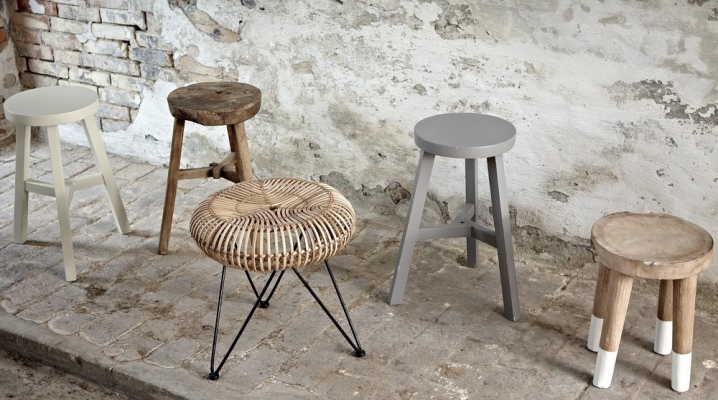
Stylish and compact kitchen stools are a worthy alternative to armchairs and chairs. They can be used alone or in combination with sofas, banquettes or cushioned corners. Such furniture has many advantages and disadvantages. The model line of stools is extensive - products are produced in various forms, have structural differences, different colors and designs. To make a choice in favor of a high-quality and reliable solution, it is necessary to study in more detail the features of these pieces of furniture.
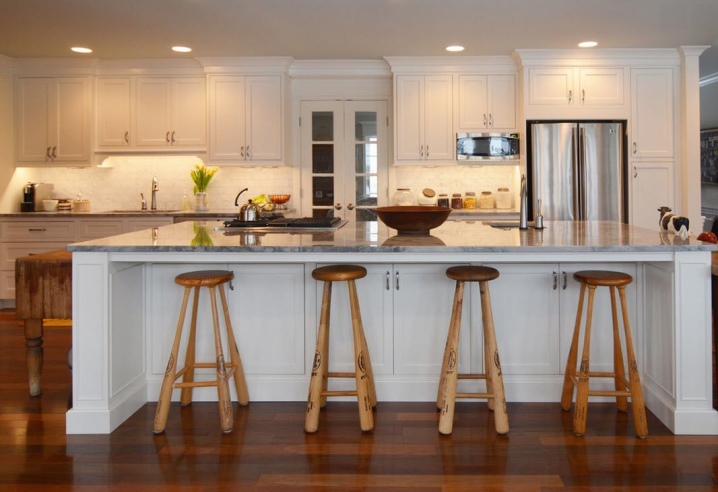
Advantages and disadvantages
Stool - furniture that includes a support (legs) and a seat, combined with each other. Due to the simple design, the products are reliable and stable. Due to the lack of a backrest, the products acquire additional advantages:
- do not "overload" the interior;
- easy to clean under the table, freeing up useful space;
- in harmony with the existing furnishings and decor;
- do not require thorough and lengthy cleaning;
- have an affordable cost.
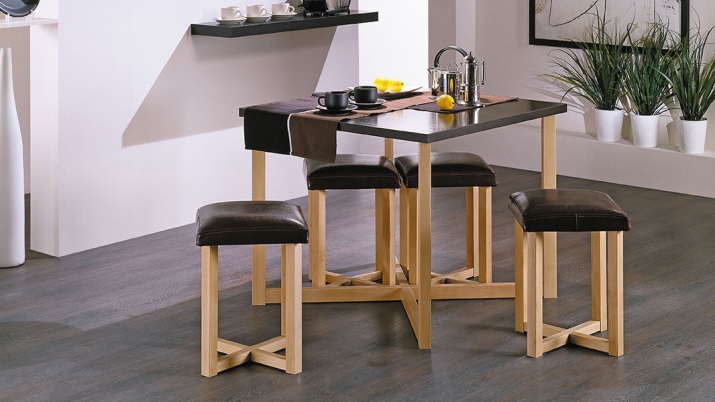
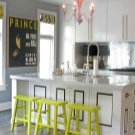
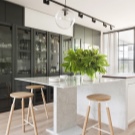
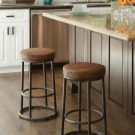
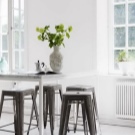
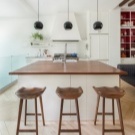
The advantages of such solutions include their small size, portability and light weight. If the products are not needed, they are stacked on top of each other and put away in the closet, closet or on the balcony. In the event of the arrival of relatives or guests, the stools are taken out. There are few disadvantages of such products. The most common disadvantage that consumers complain about is the inconvenience of sitting down. Chairs or chairs with a backrest are much more comfortable than stools.

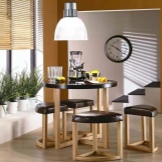
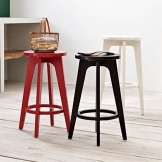
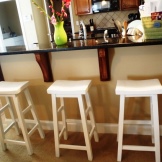
Varieties
There are several types of stools that differ in design. Products are folding, classic and bar (stationary or on wheels). Some models are equipped with a small but sturdy backrest. It acts as a support and allows the back muscles to relax. Let's consider in more detail each of the types of stools.


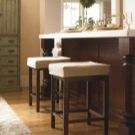
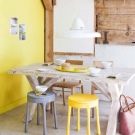
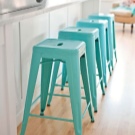

Classic
The stools in this group are the most popular. They are in great demand due to their simple design, style, and the ability to fit into any of the interiors of the room. “Traditional” models have a square seat and 4 legs. Such solutions are hard, medium hard or soft. All of them can be made from various materials. Rigid structures do not have upholstery, models with medium hardness include a thin layer of filler (up to 3 cm), in soft products the use of thick foam rubber, padding polyester or other material is provided (the layer reaches 5 cm, and if it is a pouf stool, then even more).
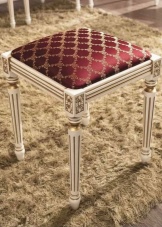
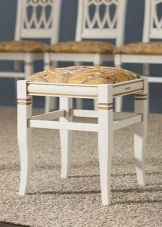
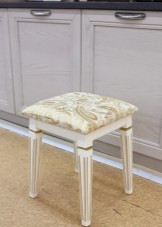
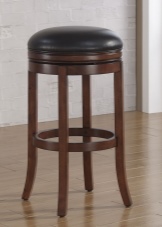
Classic solutions can be stationary or collapsible (with twist-off legs).
Folding
Folding stools are recommended to be used as additional furniture items. There is a need for additional seats when holding home festive events or with friendly gatherings. Such products are easy to unfold. As unnecessary, the stools are also quickly and easily folded and removed to the balcony or loggia. The advantages of folding models are their compactness (especially when folded), functionality and low weight. The disadvantages include rapid wear and a short operating period due to the hinge system. No matter how carefully you handle such a stool, it will break faster than classic products.
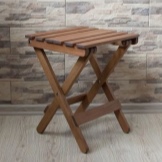

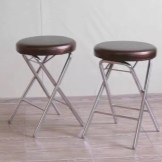

Bar and step stools
Bar products are visually similar to a stool with 1 or more elongated legs, complemented by footrests. Some models have the ability to adjust the feet in height. These are reliable and stable structures made of metal or durable plastic... They are preferred when decorating the bar counter in the kitchen. Such solutions are suitable for creative people looking for variety when creating stylish and unusual designs.
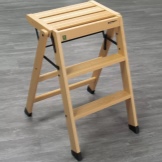
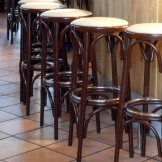
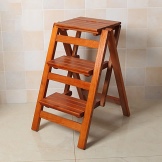
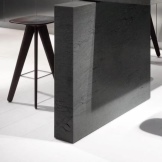
Step stools are the least common in modern dwellings. This is a functional furniture that will become an irreplaceable assistant in a room with high ceilings. Sometimes a ladder chair plays the role of a decor item, since they look quite interesting. These models are suitable for neoclassicism or empire style.
Manufacturing materials
For the production of stools, natural wood, metals, plastic, as well as chipboard or MDF are used. There are combined products, for example, their frame can be metal, and the seat can be made of wood or plastic. The most solid and luxurious models are considered to be made of wood. They are made from solid oak, walnut, beech, spruce, pine, larch and other wood species. It is worth noting that oak or walnut furniture will cost more than items made from conifers.

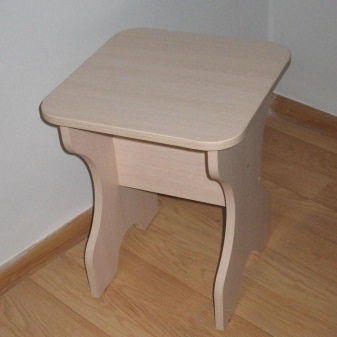
Stools on a metal frame are especially popular. As a rule, the support of such products is made of hollow pipes, which are coated from the outside with an anti-corrosion decorative compound. Furniture with a metal frame is stable, lightweight and inexpensive. These advantages lead to a high demand for metal objects.
Models made of chipboard and MDF are also popular due to the optimal ratio of cost and quality. Of course, they will not last as long as solutions made from natural wood, but they are also cheaper. Conscientious manufacturers, in order to increase the service life, cover the products with veneer and process them with special impregnations that increase the material's resistance to high levels of moisture.

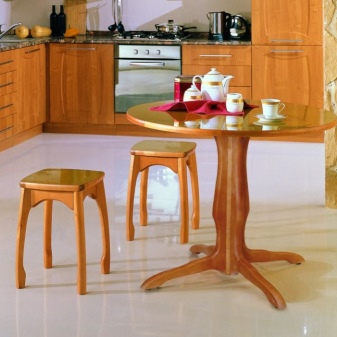
The cheapest stools are made from plastic. Such products are most often purchased as additional seats, and not for daily use. The main advantages of plastic:
- ease;
- resistance to high humidity;
- resistance to acid and alkaline compounds;
- ease of care.
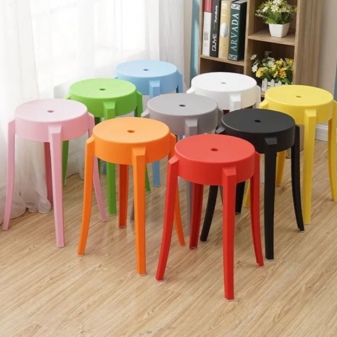
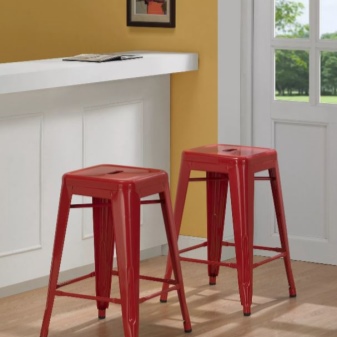
However, plastic models are unlikely to last long. Such products are very fragile, which is why they can break if used carelessly. In addition, plastic can change color when exposed to UV rays.
For the manufacture of soft stools and furniture with medium hardness, different materials are also used as upholstery. In the production of expensive and elite products, genuine leather is used. This material is easy to clean, resistant to mechanical stress, looks aesthetically pleasing. Its main disadvantages are the high cost and the ability to "stick" to the body. A worthy alternative can be leatherette or eco-leather. These two artificial materials look like natural leather, but they are less durable, due to which they will not be able to serve for a long time. With intensive use on leatherette, scuffs, scratches and cracks are often formed. To restore the attractiveness of the product, they resort to replacing the upholstery.
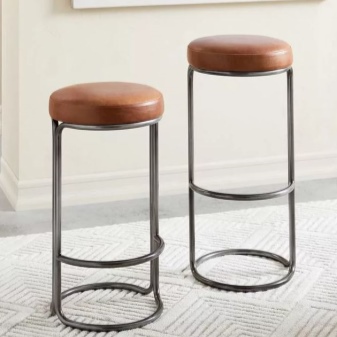

Textiles are often used as cladding material. The fabric used in the kitchen is often impregnated with special compounds or Teflon is applied. The treated skin is able to repel dirt, grease splashes and moisture. In soft models, the filler is foam rubber, latex or batting. Foam rubber is notable for its budget, but it quickly squeezes through and loses its performance. Artificial latex is more expensive and of better quality. It is resilient and durable. Batting is not very suitable for kitchen conditions, as it tends to saturate odors.
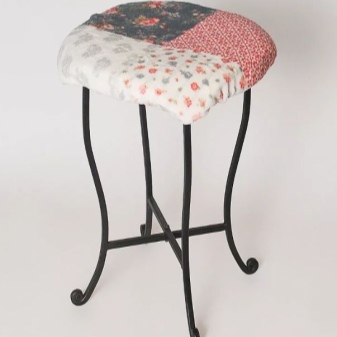
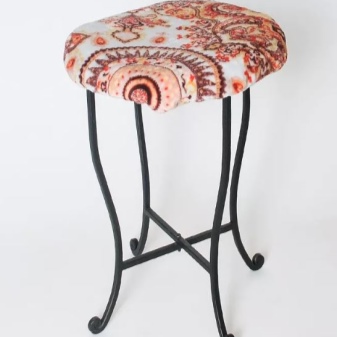
Colors
Stools are produced in various color variations. The frame and upholstery can be of different or similar shades. Thanks to a large selection of colors, it will not be difficult to find the optimal solution. Furniture stores sell products with upholstery in the same color or with patterns. White, pastel, mustard, brown, gray, beige colors will look original in the interior. Products with such neutral tones can fit into any interior. Due to the absence of dark colors, they will not "overload" a small area of space. Stools with bright and rich colors are also on sale:
- purple;
- green;
- orange;
- red;
- blue;
- turquoise;
- bright yellow.
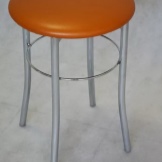
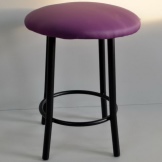
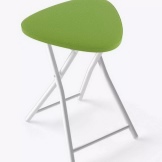
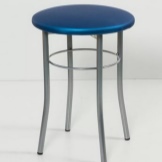
These colors are chosen when they want to focus on the dining area. Bright chairs are suitable for almost any interior style (except classic). They can complement the furnishings or bring variety and originality into the space decorated in "calm" colors.
Design
Modern stools are very different in appearance from the first models produced. They are available in various designs. Products may differ in the shape of the seat. Round, square, oval are popular, while their shape can be straight or curved (anatomical models). Various stool models are equipped with all kinds of supports. Legs can be round, square, rectangular, chrome, if these are metal products, forged.
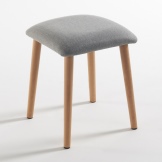
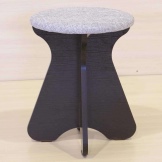
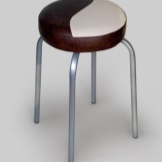
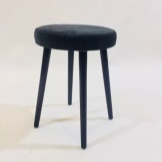
Supports for classic furniture are often carved. In addition, the supports are twisted, with rounded edges, crossed. The supports can be located both at right angles and at an angle. Stools with a disc seat on 1 high rack with 3 or 4 small legs look elegant and original.

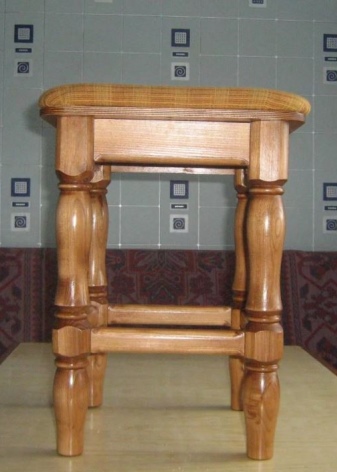
Manufacturers
Today, companies specializing in the manufacture of furniture for home and office are ready to satisfy the decorative tastes of the most demanding customers. Foreign companies are leading in this area - in most cases they are the first to offer consumers new stool models. They create products of unusual shapes using ergonomic accessories and decor. The most popular foreign manufacturers in Russia:
- Tonin Casa;
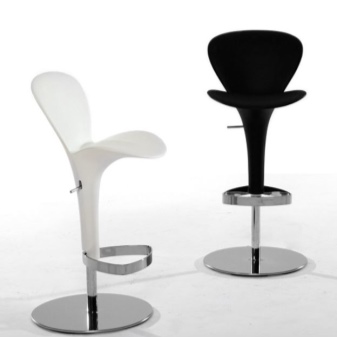
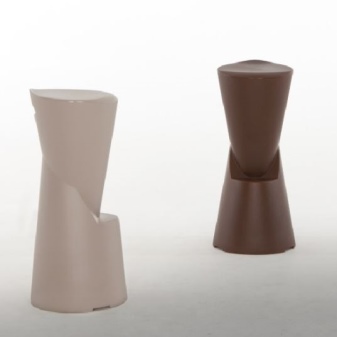
- Bonaldo;
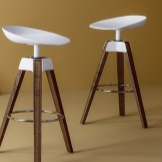

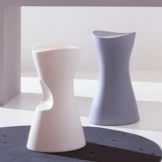
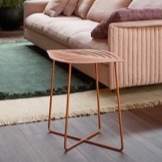
- Miniforms;
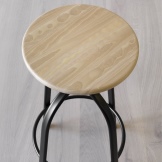
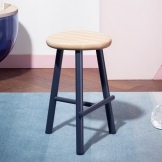
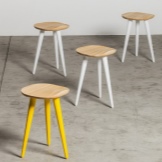
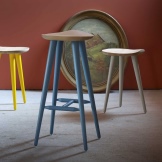
- Lapalma;

- IKEA.
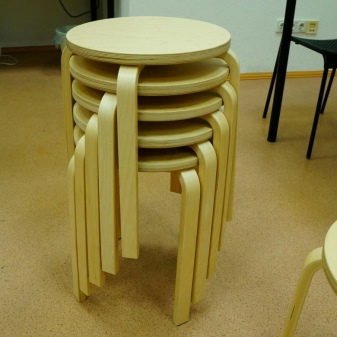

In the manufacture of stools, European and American manufacturers use plastic, wood, metal. Domestic firms are trying to keep up with foreign competitors and every year they offer more and more high-quality and improved furniture. The most popular domestic producers are Komandor, Domoteka, Shatura and others.
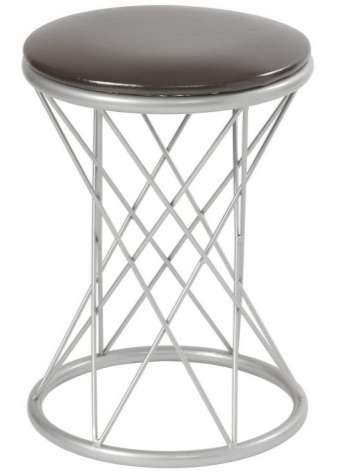
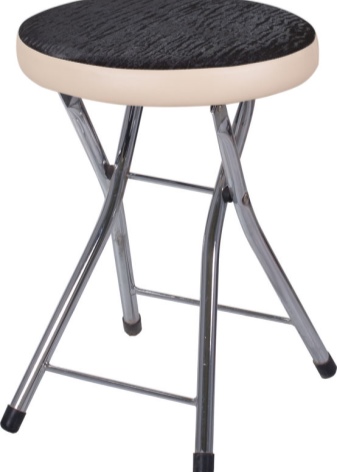
Selection Tips
When buying stools, most buyers are guided by the appearance of the product and its cost. However, it is not enough to evaluate only these parameters. In order for the furniture to serve for a long time, a number of parameters should be taken into account when choosing it.
- Material. If you plan to use the stools daily, it is recommended to give preference to models made of wood or metal. When choosing, you need to rely on the materials from which the existing furnishings are made. For example, if wooden objects prevail in the kitchen, and there are no metal structures, it makes no sense to purchase aluminum stools and vice versa.
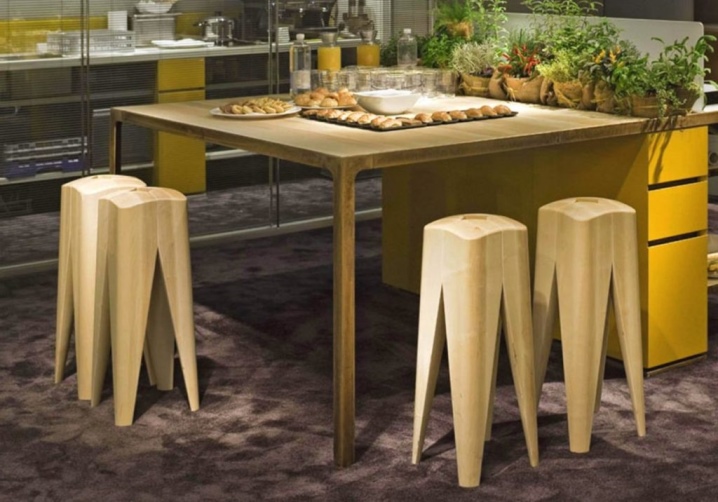
- Colors. It is important that the upholstery of the seat item matches the color scheme of other furniture.
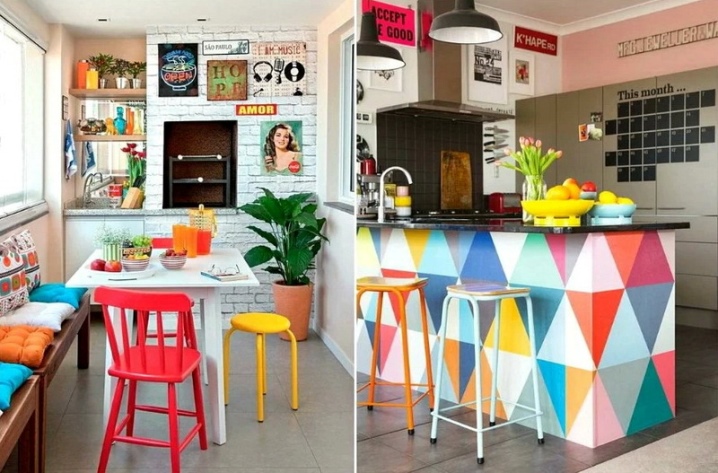
- Upholstery. It is preferable to use stools with natural or artificial leather upholstery in the kitchen.
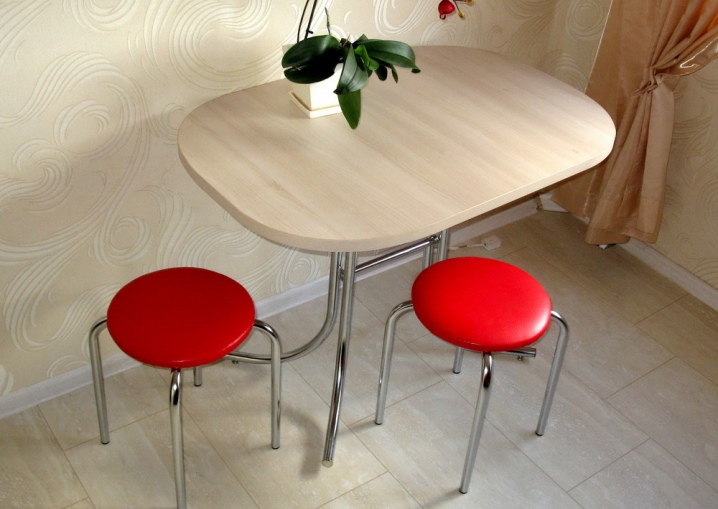
- Seat hardness. Experts recommend giving preference to models with medium hardness. Sitting on too soft products can negatively affect the health of the spine, and hard decisions are not very convenient to use.
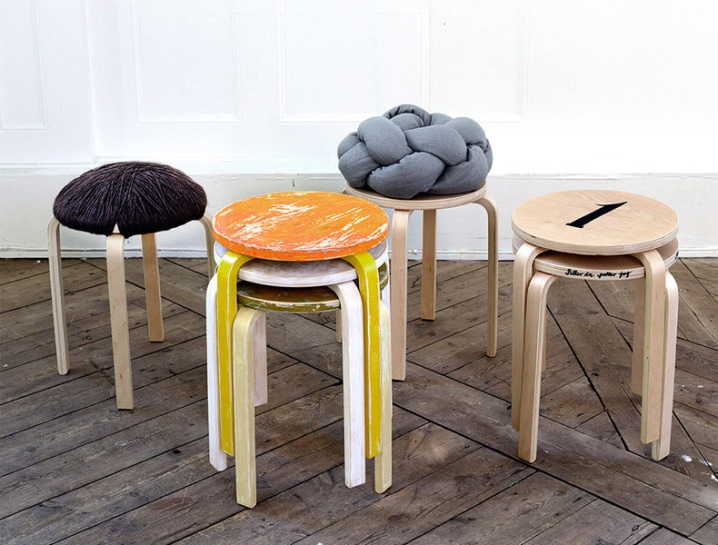
- Dimensions. The optimum seat size is 50 cm and the height is 45 cm. However, these stool dimensions are suitable for standard kitchen tables.If they are higher, then the products are needed longer. When choosing products, you should pay attention to the dimensions of the room - non-standard dimensional furniture items are unlikely to be suitable for a small kitchen.
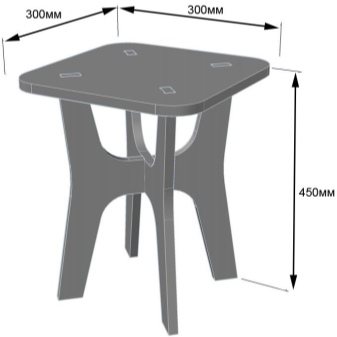
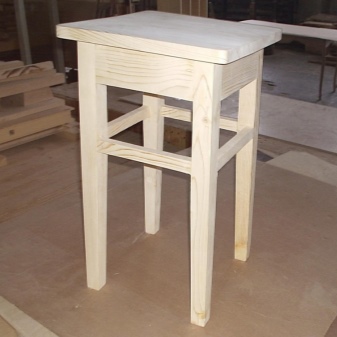
- The weight. The lighter the product, the more convenient it will be to move it around the kitchen and rooms.
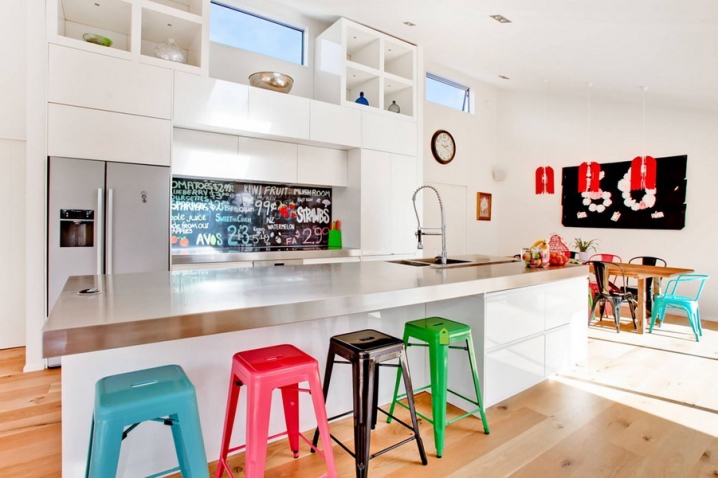
- If bar models are preferred, you need to choose products with the provided footrest... The fact is that due to the high support, the legs do not touch the floor when sitting, which can cause tension and fatigue in them. Special stands will eliminate these problems.
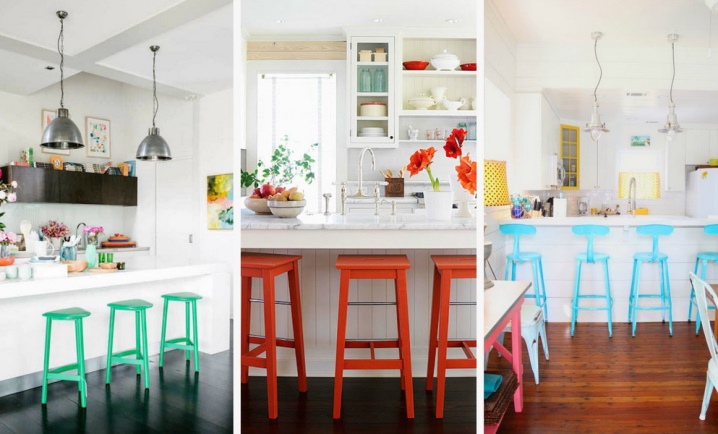
When choosing, it is not recommended to dwell on the cheapest solutions - in most cases they are made of low-quality materials, which is why they will not be able to serve for a long time.
Beautiful examples in the interior
Stools are often used to decorate the dining area in the kitchen. This furniture looks stylish and sophisticated. The pictures below demonstrate how you can successfully combine different types of stools with classic or modern kitchen interiors.
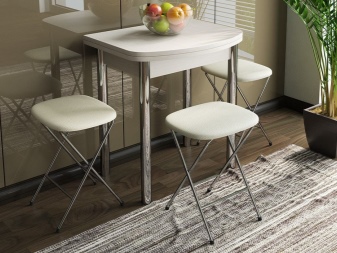

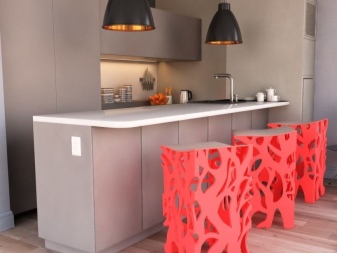
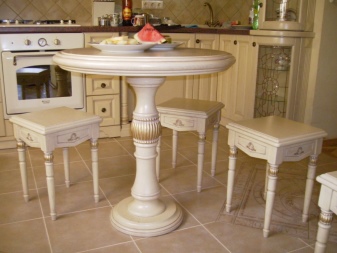
For information on how to choose the right stool for the kitchen, see the next video.













The comment was sent successfully.